The Back Deck Roll
The back deck roll evolved from the need to roll as quickly as possible, which facilitates by skipping the set up step that other rolls require. It's not uncommon to hear people comment that although it's a quick roll, it's a dangerous one that leaves a paddler's face exposed, and puts the shoulder at risk. It's true that your face isn't as well protected, but you spend a LOT less time underwater, and your head stays much closer to the surface throughout the roll. Also, for much of the time you are under water, your arms are actually in front of your face. With regard to shoulder safety, there is the potential for the shoulder to be put in an awkward position, but if you keep your hands in front of your body and don't overextend your arms, this roll won't pose any more risk to your shoulder than the standard C-to-C or sweeping rolls. So when should you use the back deck roll? We use it virtually all the time, and once you master it, it just might become your standard roll as well.
The key to the back deck roll is committing yourself to flipping once you've passed the point of no return (the point at which no brace will save you efficiently or safely). This commitment involves throwing yourself on the back deck of your kayak and leading the way with your paddle and body. If you can do these two things before you've completely turned upside down, then you can start the process of rolling yourself upright before your kayak has even finished flipping over!
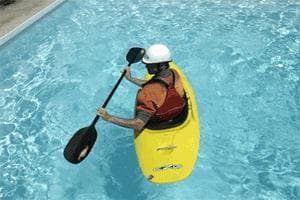
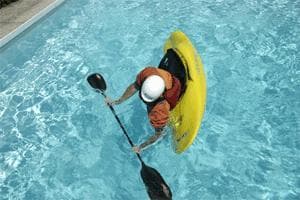
Because of the right-handed offset on most kayak paddles, it's easiest to perform the back deck roll flipping to the left, with your right blade doing the work. Start with your paddle held comfortably in front of your chest, with elbows hanging down and wrists cocked back so that your right paddle blade is facing directly down. You've now formed a rectangle with your arms, paddle and chest. This rectangle should stay relatively intact throughout the roll. Now lean back and aggressively turn your head and upper body to the left. As weird as this sounds (or maybe not for some), think about trying to kiss the stern of your kayak! This keeps your head turned and your neck cocked back. With your head and body aggressively leading the way and your kayak committed to flipping, plant the power face of your left paddle blade at the stern of your boat. As you continue to flip, keep turning your body and get your right blade in the water as quickly as possible. This right blade will be providing the support/brace needed to roll the kayak.
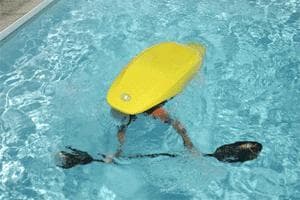
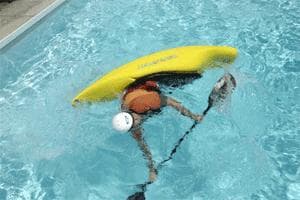
You should now be lying on the back deck of your boat, which should be almost completely upside down. Continuing to lead the way with your head and body, push your right blade out in a wide arc over your head, and then out to the side and all the way to your toes. If your wrists remain cocked back as they should be, then your right blade will be on a sculling angle that keeps it near the surface and provides the brace your hips need to roll the kayak upright.
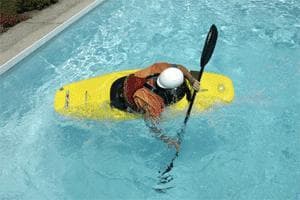
Still keeping that rectangle between your arms, chest, and paddle intact, your body will need to swing forward through the last part of the roll. When your right blade finally reaches your toes, your boat should be completely upright and your body should be in an aggressive position, ready for the next stroke. This may take a while to master, but with enough aggression, commitment and practice, it will eventually click and open the door to new possibilities for your roll.
Ken Whiting was the 1997/98 World Whitewater Freestyle Champion. He has produced an award-winning series of instructional kayaking books and DVDs, and leads kayaking trips to Chile. Look for his latest book 'The Ultimate Guide to Whitewater Kayaking', and video 'The Ultimate Guide to Sea Kayaking'. Check out www.helipress.com
Related Articles
Last month we discussed how to detect and patch (not "repair") a leak on a typical roto-molded kayak…
A kayaker should have a number of recovery methods to choose from in their bag of skills. I feel the…
It is always good to have a few different ways to perform a capsize recovery. The main solo recovery…
The outdoor environment can be extremely challenging. The noise from the wind and waves can drown out…
